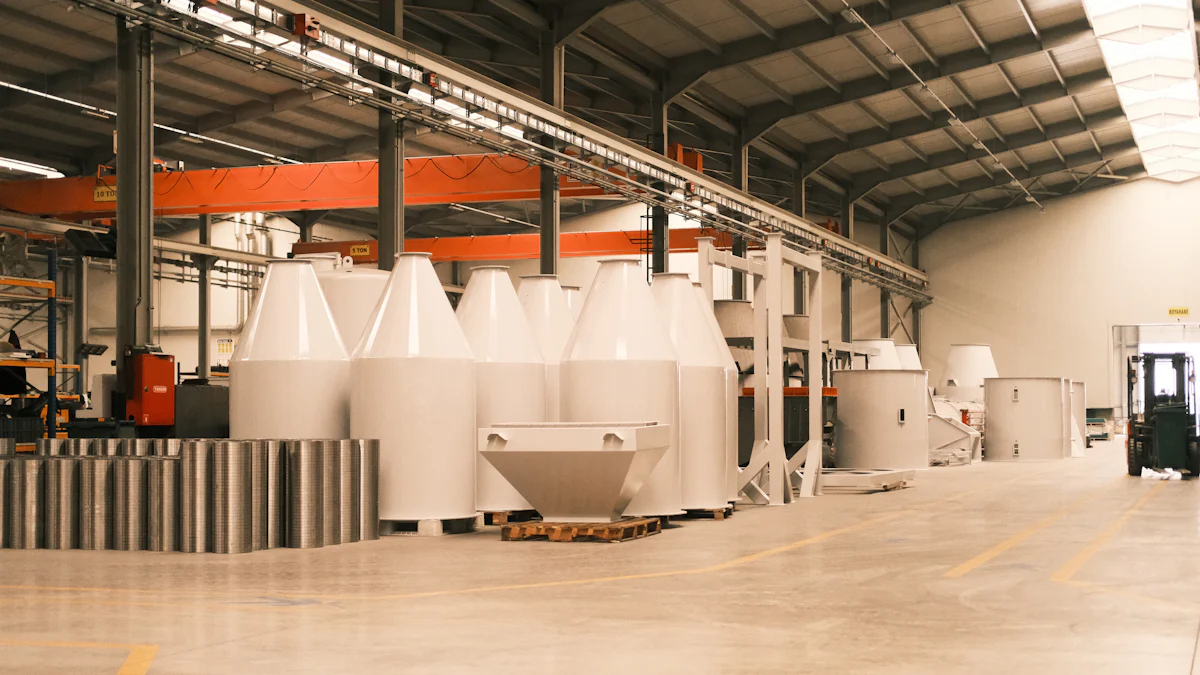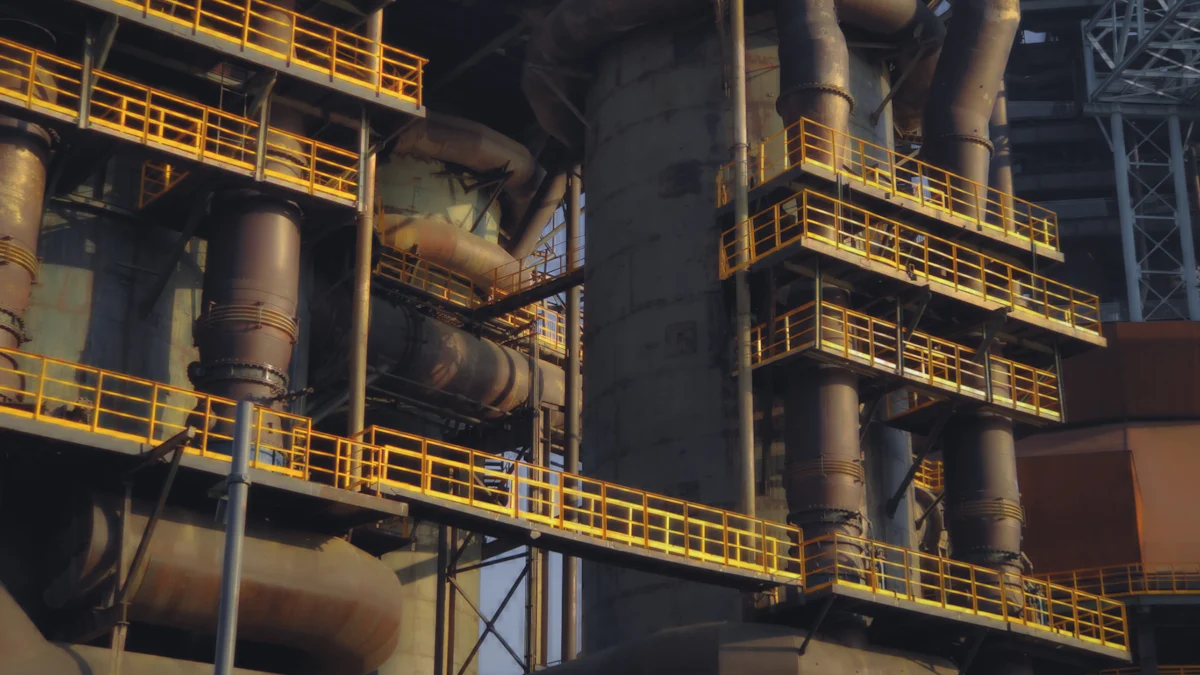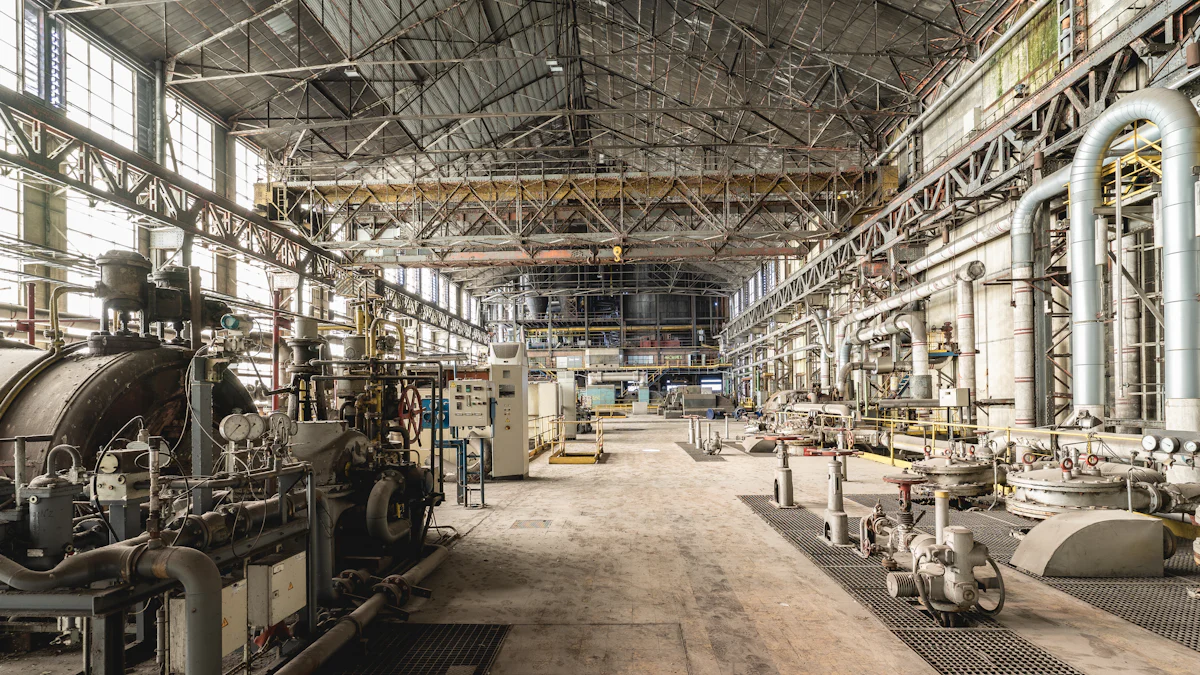China’s Role in Shaping Aluminum Demand

China has solidified its position as a global leader in aluminum production, contributing over 40 million metric tons annually, which accounts for nearly half of the world’s total output. This dominance extends to various applications, including aluminum cookware. Despite this stronghold, its production capacity is nearing the 45 million tonnes cap, limiting further expansion. This constraint has positioned China as both a major producer and a net importer of aluminum. In 2023, imports surged by 28%, driven by strong domestic demand for products like aluminum cookware. Policies and trade dynamics, coupled with the country’s vast consumption—20.43 million tonnes in the first half of 2023—continue to shape global aluminum prices and supply chains.
Key Takeaways
- China is the world’s largest aluminum producer, contributing nearly half of global output, but is also a net importer due to production capacity limits.
- Rising alumina prices have significantly increased production costs, impacting both China’s aluminum output and global market prices.
- Domestic demand in China is driven by infrastructure projects, renewable energy initiatives, and the growing electric vehicle sector, all of which require substantial aluminum.
- The removal of export tax rebates on aluminum products may shift trade dynamics, making Chinese aluminum less competitive internationally while prioritizing domestic supply.
- Geopolitical tensions and trade policies, particularly with the U.S., are reshaping global aluminum trade flows and pricing strategies.
- Opportunities in renewable energy and electric vehicles position aluminum as a key material for sustainable development, aligning with global environmental goals.
- China’s strategic policies and innovations in aluminum production will continue to influence both domestic consumption and international market trends.
China’s Aluminum Production Capacity and Global Significance

Nearing the 45 Million Tonnes Capacity Cap
China’s aluminum production has reached a critical juncture as it approaches the 45 million tonnes capacity cap. This ceiling restricts further expansion, compelling the nation to balance its domestic production with imports. As the world’s largest aluminum producer, China accounted for nearly 60% of global smelter capacity in 2022. However, this dominance does not equate to complete self-sufficiency.
China’s capacity limitations ensure its position as a net importer of aluminum, despite producing over 40 million metric tons annually.
This dual role influences global supply chains. The production cap tightens the global market, creating opportunities for other producers to fill the gap. Meanwhile, China’s reliance on imports underscores its growing domestic demand, particularly in sectors like infrastructure and consumer goods.
Alumina Prices and Their Impact on Production
Alumina, a key raw material in aluminum production, has seen record-high prices in 2023. Costs have doubled, placing significant pressure on producers. Alumina now accounts for over 50% of the total expenses involved in aluminum manufacturing. This surge in costs has ripple effects across the industry.
Rising alumina prices not only increase production costs but also contribute to market tightening.
China, as the largest aluminum producer, faces unique challenges. Higher alumina costs could limit production growth, further emphasizing the importance of imports. These price dynamics also affect global aluminum prices, making the market more volatile.
Rusal’s Production Cuts and China’s Import Reliance
Rusal, one of the world’s largest aluminum producers, announced a reduction of 500,000 tonnes in output for 2023. This decision has significant implications for China’s aluminum imports. In the same year, China imported 263,000 tonnes of aluminum from Rusal, highlighting its dependence on external suppliers.
Rusal’s production cuts exacerbate the challenges posed by China’s capacity cap and rising alumina costs.
This reliance on imports reflects the interconnected nature of the global aluminum market. China’s policies and purchasing decisions influence not only domestic supply but also international trade dynamics.
Domestic Demand Drivers in China
Infrastructure and Property Market Influence
Infrastructure development remains a cornerstone of China’s economic strategy, driving substantial aluminum demand. Large-scale projects, such as bridges, railways, and urban transit systems, require significant quantities of aluminum due to its lightweight and durable properties. In 2023, the government prioritized infrastructure investments to stimulate economic growth, further boosting aluminum consumption.
Infrastructure projects not only support economic expansion but also create consistent demand for aluminum in construction and transportation sectors.
However, the property market presents a contrasting picture. Weakness in this sector has emerged as a significant drag on aluminum consumption. Declining property sales and reduced construction activities have tempered the overall demand for building materials, including aluminum. This imbalance highlights the dual forces shaping China’s domestic aluminum market.
Renewable Energy and Electric Vehicles (EVs)
China’s renewable energy initiatives have become a major driver of aluminum demand. Solar panel production, which relies heavily on aluminum for frames and mounting structures, has surged. In 2023, primary aluminum consumption grew by 3.9%, reaching 42.5 million tons, largely due to the expansion of solar energy projects. This trend underscores the critical role of aluminum in supporting China’s transition to sustainable energy.
The electric vehicle (EV) sector also contributes significantly to aluminum demand. Lightweight materials like aluminum are essential for improving EV efficiency and range. China’s automobile production is projected to reach 35 million vehicles by 2025, with EVs accounting for a growing share. This shift not only strengthens the aluminum market but also aligns with global sustainability goals.
The automotive sector’s growth, coupled with renewable energy advancements, positions aluminum as a key material for China’s green initiatives.
Aluminum Cookware and Consumer Goods
Aluminum cookware plays a vital role in China’s domestic consumption landscape. Products such as aluminum frying pans, saucepans, and camping cookware are widely used due to their affordability, durability, and excellent heat conductivity. The rising middle class and urbanization have fueled demand for these consumer goods, further driving aluminum consumption.
Aluminum cookware offers advantages over other materials, including lightweight design and resistance to corrosion, making it a preferred choice for households.
Domestic consumption trends also reflect a growing preference for sustainable and high-quality products. This shift has encouraged manufacturers to innovate and expand their aluminum cookware offerings, catering to evolving consumer needs. As a result, the cookware segment continues to be a significant contributor to China’s aluminum demand.
China’s Influence on Global Trade Dynamics
Export Tax Rebate Removal and Trade Impacts
China’s decision to eliminate export tax rebates on aluminum products marks a significant shift in its trade strategy. This policy change, effective December 1, aims to redirect aluminum supplies toward domestic markets. By removing these rebates, China seeks to strengthen its control over global aluminum trade while addressing internal supply needs.
The removal of export tax rebates could reduce the competitiveness of Chinese aluminum products in international markets, potentially altering global trade flows.
This move may lead to higher costs for international buyers, encouraging them to explore alternative suppliers. Countries reliant on Chinese aluminum imports might diversify their sourcing strategies, reshaping trade partnerships. Additionally, this policy could impact pricing dynamics. Increased domestic supply may exert downward pressure on Shanghai Futures Exchange aluminum prices, while global markets could experience tighter supply and elevated costs.
Partnerships with Key Players
China’s trade relationships with major aluminum producers, such as Russia, play a pivotal role in shaping global market dynamics. In 2023, China imported substantial quantities of aluminum from Russian producer Rusal, highlighting the interdependence between these two nations. This partnership ensures a steady supply of aluminum for China’s growing domestic demand while providing Russia with a reliable export market.
Geopolitical tensions influence these trade relationships, adding complexity to global aluminum supply chains.
For instance, trade policies and sanctions imposed by Western nations on Russia could indirectly affect China’s aluminum imports. Such developments may prompt China to strengthen its alliances with other key players or invest in alternative sourcing strategies. These evolving dynamics underscore the intricate balance between economic interests and geopolitical considerations in the aluminum trade.
Impact of China’s Policies on Global Aluminum Prices

Tariffs and Their Effects
The imposition of tariffs has significantly influenced the global aluminum market. The United States has maintained a 25% tariff on Chinese aluminum imports, aiming to protect domestic producers. This policy has created challenges for Chinese exporters, reducing their competitiveness in the U.S. market. As a result, American manufacturers relying on imported aluminum have faced higher costs, which often get passed on to consumers.
In addition to tariffs on Chinese imports, the U.S. imposed additional duties on Canadian aluminum. These measures have further tightened the domestic supply chain, driving up prices for American buyers.
The combined effect of these tariffs has reshaped trade flows. Many buyers have sought alternative suppliers, while some have turned to domestic production despite higher costs. These shifts underscore the far-reaching impact of trade policies on pricing and supply dynamics.
Market Tightening and Price Recovery
The global aluminum market is undergoing a significant transformation. Analysts predict a shift from surplus to a deficit of 400,000 tonnes by 2025. This tightening of supply reflects multiple factors, including China’s capacity cap, rising alumina costs, and reduced exports. The deficit is expected to create upward pressure on prices, benefiting producers but challenging consumers.
Forecasts suggest that aluminum prices will recover to $2,625 per tonne by 2025, marking a notable rebound from recent fluctuations.
China’s policies play a pivotal role in this recovery. The removal of export tax rebates has redirected supplies to domestic markets, reducing availability for international buyers. Meanwhile, robust demand within China, driven by sectors like renewable energy and electric vehicles, continues to absorb significant volumes of aluminum. These trends highlight the interconnected nature of global markets, where policy decisions in one country can ripple across the world.
The tightening market conditions also reflect broader economic shifts. In the first half of 2023, China’s aluminum consumption reached 20.43 million tonnes, a 2.82% year-on-year increase. This growth, coupled with declining exports, has contributed to lower inventories. By June 2023, aluminum ingot social inventory had dropped by 15.56% compared to the start of the year, further emphasizing the market’s constrained supply.
As the market transitions to a deficit, stakeholders must navigate a complex landscape shaped by policy changes, economic trends, and evolving demand patterns.
Future Outlook: Challenges and Opportunities
Geopolitical and Economic Influences
The impact of trade wars and geopolitical tensions on market stability
Geopolitical tensions and trade wars continue to shape the aluminum market’s trajectory. The United States maintains concerns about Chinese aluminum distorting the market through indirect trade flows, particularly via Mexico. Such apprehensions highlight the complexities of global trade policies and their influence on market stability. Additionally, higher tax burdens on China’s metal exports could create substantial shifts in global aluminum markets. These taxes, coupled with reduced exports, may tighten international supply chains, driving up prices.
“China’s aluminum production capacity is a double-edged sword: it drives global innovation and economic growth but also creates challenges related to overproduction and environmental impact.” — Made-in-China
The ongoing real estate crisis in China further complicates the economic landscape. This downturn has weakened domestic demand for aluminum in construction, a traditionally strong sector. However, low ingot stocks and supply disruptions have provided some relief to the market, boosting prices and stabilizing short-term demand.
Economic conditions shaping future demand and supply
Economic conditions play a pivotal role in determining the future of aluminum demand and supply. China’s weighted average full production cost decreased slightly in the first half of 2023, driven by lower coal, alumina, and anode prices. This reduction in costs could encourage producers to maintain output levels despite market challenges. However, environmental regulations and sustainability requirements pose significant hurdles for the industry. These factors necessitate innovation and adaptation to meet global standards.
The aviation sector in China emerges as a promising area for aluminum demand. Lightweight materials like aluminum are essential for aircraft manufacturing, aligning with the industry’s need for fuel efficiency and performance. This growth in aviation underscores the diverse applications of aluminum and its potential to drive future demand.
Opportunities in Renewable Energy and EVs
Growth potential in renewable energy and EV sectors
Renewable energy and electric vehicles (EVs) represent significant growth opportunities for the aluminum market. Solar energy projects rely heavily on aluminum for panel frames and mounting structures. China’s commitment to expanding its renewable energy capacity ensures a steady demand for aluminum in this sector. The country’s focus on sustainability aligns with global efforts to reduce carbon emissions, positioning aluminum as a key material in the green energy transition.
The EV sector also contributes to aluminum’s rising prominence. Lightweight aluminum components enhance vehicle efficiency and range, making them indispensable in EV manufacturing. With China’s automobile production projected to reach 35 million vehicles by 2025, the demand for aluminum in this sector will likely surge. This growth not only supports the aluminum market but also reinforces China’s leadership in sustainable innovation.
Aluminum’s role in renewable energy and EVs highlights its versatility and importance in achieving global sustainability goals.
China’s role in driving innovation and sustainability in aluminum use
China’s aluminum industry continues to drive innovation and sustainability. The country invests in advanced technologies to improve production efficiency and reduce environmental impact. These efforts address global concerns about overproduction and pollution, ensuring that aluminum remains a viable material for future applications.
Imported aluminum has also played a role in balancing domestic supply and demand. Production cuts in regions like Yunnan, caused by seasonal factors, have led to tighter supply chains. By reducing exports of aluminum products, China can ease domestic supply constraints while meeting internal demand. This strategic approach reflects the country’s ability to adapt to changing market conditions and maintain its position as a global leader in aluminum production.
As China navigates these challenges and opportunities, its policies and innovations will shape the future of the aluminum market, influencing both domestic and international dynamics.
China’s pivotal role in the global aluminum market remains undeniable. As the largest producer and consumer, its production capacity of over 40 million metric tons annually shapes global supply and pricing. Domestic demand, driven by sectors like renewable energy, electric vehicles, and aluminum cookware, continues to grow. Policies such as export tax rebate removal and rising alumina costs further influence market dynamics. Looking ahead, challenges like balancing economic growth with environmental goals persist. However, opportunities in sustainable energy and innovation position China to lead the aluminum industry’s evolution.
FAQ
What makes aluminum cookware a popular choice?
Aluminum cookware stands out due to its lightweight design, excellent heat conductivity, and affordability. These qualities make it ideal for everyday cooking. Additionally, aluminum’s resistance to corrosion ensures durability, even with frequent use.
How does aluminum cookware compare to other materials?
Aluminum cookware offers superior heat distribution compared to stainless steel. It heats up quickly and evenly, reducing cooking time. Unlike cast iron, aluminum is much lighter, making it easier to handle. Its affordability also makes it a preferred choice for many households.
Is aluminum cookware safe for cooking?
Yes, aluminum cookware is safe for cooking. Manufacturers often coat the surface with non-stick or anodized layers to prevent direct contact between food and raw aluminum. This process enhances safety and ensures the cookware remains durable over time.
What are the advantages of die-cast aluminum cookware?
Die-cast aluminum cookware provides exceptional durability and heat retention. The manufacturing process creates a thicker base, which prevents warping and ensures even heat distribution. Products like aluminum casseroles, fry pans, and griddles benefit from this technique, offering long-lasting performance.
Why is aluminum cookware preferred for camping?
Aluminum cookware is lightweight, making it easy to carry during outdoor activities. Its excellent heat conductivity allows for quick cooking over campfires or portable stoves. Camping cookware made from aluminum is also resistant to rust, ensuring reliability in various weather conditions.
How does aluminum cookware contribute to energy efficiency?
Aluminum’s high thermal conductivity reduces cooking time by distributing heat evenly across the surface. This efficiency minimizes energy consumption, whether using gas, electric, or induction stoves. Faster cooking times also make it an eco-friendly option.
What types of aluminum cookware are most commonly used?
Common types include aluminum frying pans, saucepans, griddles, and pancake pans. Roast pans and camping cookware are also popular for their versatility. Each type caters to specific cooking needs, from sautéing vegetables to preparing meals outdoors.
Can aluminum cookware be used on all stovetops?
Most aluminum cookware works well on gas and electric stovetops. However, not all are compatible with induction cooktops unless they have a magnetic base. Checking the manufacturer’s specifications ensures proper usage.
How should aluminum cookware be maintained?
To maintain aluminum cookware, avoid using abrasive cleaning tools that can scratch the surface. Handwashing with mild detergent preserves its coating. For stubborn stains, soaking in warm soapy water helps. Proper care extends the lifespan of the cookware.
Why is aluminum cookware a sustainable choice?
Aluminum is a recyclable material, making it an environmentally friendly option. Many manufacturers use recycled aluminum in production, reducing waste and conserving resources. Its durability also means fewer replacements, contributing to sustainability.
Post time: Jan-21-2025
